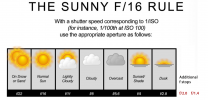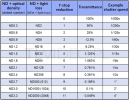Hi all 
I recently just purchased a DJI mini 3 pro and it came yesterday. To begin with I plan on using it mainly for photography and then eventually getting into videography as my piloting skills improve. I keep getting conflicting messages on whether to purchase ND filters. So I thought I would come to a dedicated community to ask for advice. I know it's not necessary a need but I want to get the best quality images and later on videos out of my drone,
For photography purposes will ND filters be any use to me apart from long exposure shots? Also a big factor is the fact I currently have a 50% off a £120 spend, so I'm thinking of getting a nice waterproof solid case and some ND Filters even if I don't need to use them now as I'll be getting them half price.
I'm from Ireland so I'll be taking quite a lot of coastal shots, so would a polarized filter help me to/better to get polarized ND filters ?
If so which set would you all recommend? I had been looking at the freewell all day pack
Any advice would be greatly appreciated,
I recently just purchased a DJI mini 3 pro and it came yesterday. To begin with I plan on using it mainly for photography and then eventually getting into videography as my piloting skills improve. I keep getting conflicting messages on whether to purchase ND filters. So I thought I would come to a dedicated community to ask for advice. I know it's not necessary a need but I want to get the best quality images and later on videos out of my drone,
For photography purposes will ND filters be any use to me apart from long exposure shots? Also a big factor is the fact I currently have a 50% off a £120 spend, so I'm thinking of getting a nice waterproof solid case and some ND Filters even if I don't need to use them now as I'll be getting them half price.
I'm from Ireland so I'll be taking quite a lot of coastal shots, so would a polarized filter help me to/better to get polarized ND filters ?
If so which set would you all recommend? I had been looking at the freewell all day pack
Any advice would be greatly appreciated,












